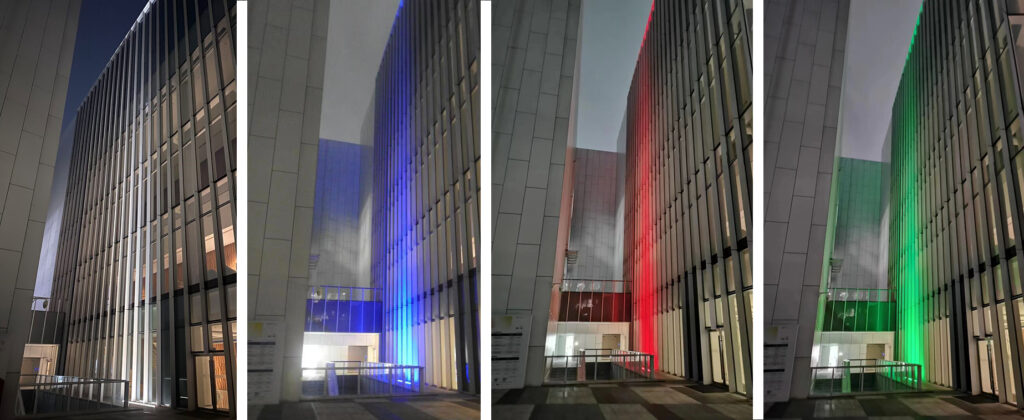Wall washer lights have gained popularity in architectural lighting due to their ability to create various lighting effects on building facades and walls. To choose the right wall washer light for your project, it’s important to understand the differences between the three most commonly used beam angles: 13°, 25°, and 45°.
Comparing the Three Types of Wall Washer Lights
The 13° wall washer light produces a narrow and concentrated beam of light, perfect for highlighting specific architectural features. With a reach of up to 20 meters, this type of wall washer light creates sharp and precise lighting effects, emphasizing the corners, edges, and contours of a building.

In contrast, the 25° wall washer light produces a wider beam of light, covering a larger surface area of the building facade. With a reach of up to 15 meters, it creates a smooth and even lighting effect, making it ideal for general lighting purposes, such as illuminating the entire surface of a building.

Finally, the 45° wall washer light produces the widest beam of light among the three types, covering the largest area on the building facade. It can reach up to 10 meters and creates a soft and diffuse lighting effect, making it ideal for ambient lighting, such as creating a warm and
inviting atmosphere in outdoor spaces.
Factors to Consider When Choosing Wall Washer Lights
When selecting a wall washer light for your project, it is essential to consider the following factors:
- Lighting Effect: The lighting effect desired is the most crucial factor to consider. The 13° wall washer light is suitable for accent lighting, the 25° wall washer light is ideal for general lighting, and the 45° wall washer light is appropriate for ambient lighting.
- Color Temperature: The color temperature of the light can affect the ambiance of the space. A warm color temperature creates a cozy atmosphere, while a cool color temperature creates a bright and energetic atmosphere.
- Brightness: The brightness of the light can affect the visual impact of the lighting display. Depending on the size and location of the building, you may need to choose a higher brightness to achieve the desired effect.
- Color Rendering Index (CRI): The CRI can affect the color accuracy and quality of the illuminated objects. A higher CRI can accurately reproduce the true colors of the building facade and enhance its visual appeal.
- Energy Efficiency: Choosing a wall washer light with high energy efficiency can reduce operating costs and environmental impact over time.
- Durability and Maintenance: It is important to consider the durability and maintenance requirements of the light to ensure that the lighting system operates effectively over an extended period.
Conclusion
Choosing the right wall washer light for your architectural lighting project can enhance the visual appeal of the building facade and create a lasting impression. By considering the lighting effect, color temperature, brightness, CRI, energy efficiency, and durability and maintenance requirements, you can select the most suitable wall washer light for your project and create an impressive lighting display.
